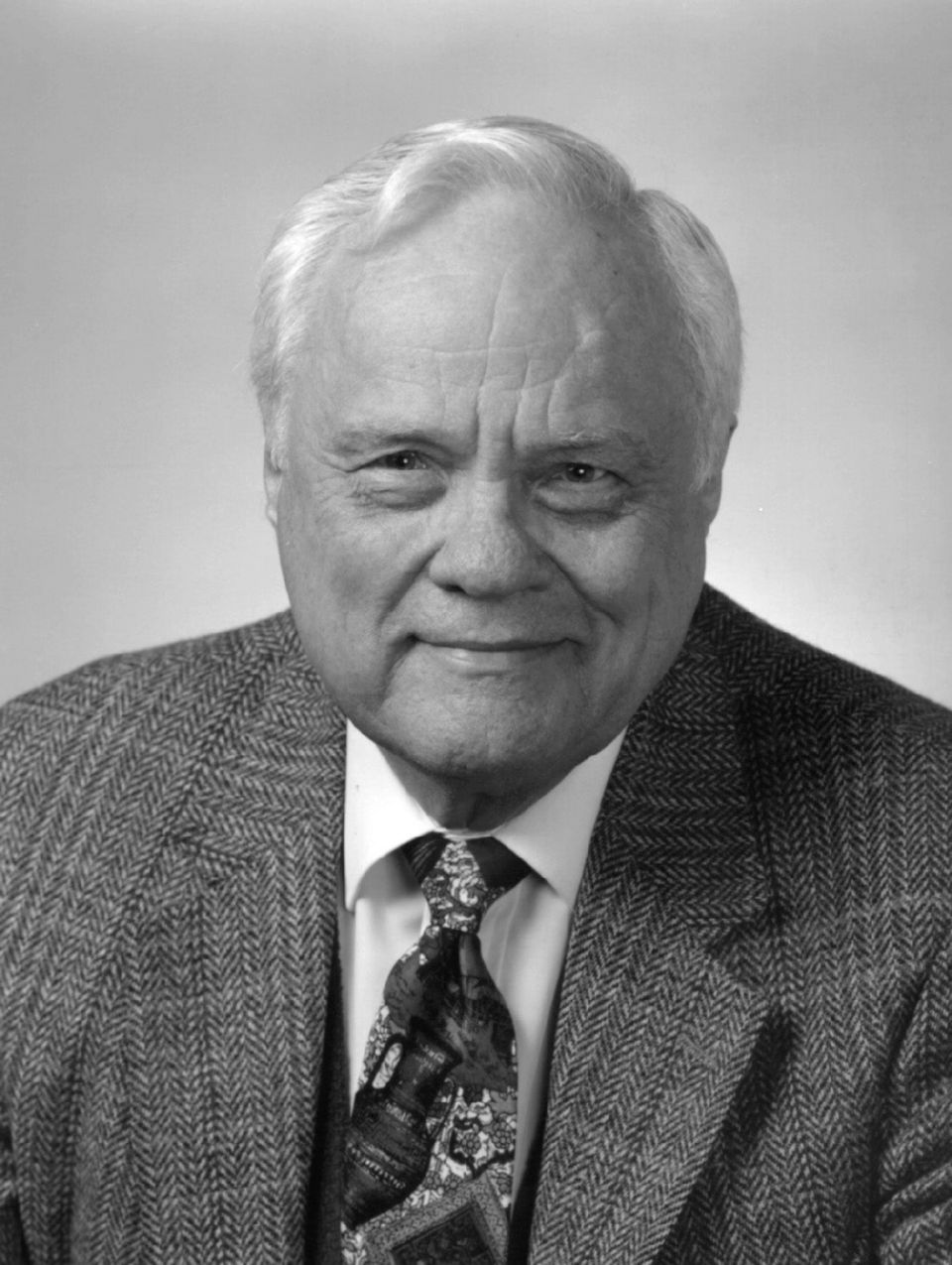Von Russel Eshleman, professor emeritus of electrical engineering at Stanford and a noted expert on radio science and planetary exploration, died Sept. 22 in Palo Alto. He was 93.
Eshleman was best known for applying spacecraft radio signals for precise measurements of planetary atmospheres and ionospheres. In a remembrance, colleagues from the Center for Radar Astronomy, which Eshleman co-founded in the 1960s, wrote that those applications have since been “brought home” by GPS satellites monitoring Earth’s atmosphere.
Additionally, Eshleman is largely credited with reviving Einstein’s suggestion of harnessing the powerful gravitational forces of the sun and other stars to create a sort of cosmic lens to peer deep into space, a complex technology still being pursued today.
Eshleman earned his doctorate at Stanford in 1952 and was quickly recruited to become a research professor, a position he held for the next five years. In 1957, he was promoted to the teaching faculty, becoming a full professor by 1961 amid the full intensity of the space race.
Techniques for studying space
Eshleman’s expertise was in exploring distant objects with radio waves, studying the far-off atmospheres, surfaces and rings of planetary objects. Accordingly, he was also an authority on celestial mechanics and Einstein’s general theory of relativity, fields of study that complemented his curiosity for studying outer space.
While working as an electrical technician in the Navy from 1943 to 1946, Eshleman first developed his interest in wave science, according to an obituary published in the San Francisco Chronicle by his eldest daughter, Angela Erickson. He was intrigued by both sonar and radar and got the notion that he might bounce radio signals off the surfaces of the moon and the sun to study their hidden structures. Those techniques became fundamental to planetary studies and remain in use today.
With Stanford colleagues Allen Peterson and Ray Leadabrand, he founded the Stanford Center for Radar Astronomy in 1962, which oversaw radio experiments between the Stanford Dish and the Pioneer 6 through 9 space probes – four identical satellites orbiting the sun that made key measurements of the density, velocity and structure of the solar wind.
His children came to refer to the iconic 150-foot antenna as “Daddy’s Dish,” according to Erickson, and the family made visits to the hills along Junipero Serra Boulevard near campus to watch as the Dish was being built in the mid-1960s.
He would go on to work closely on the Mariner, Voyager, Galileo and Apollo programs, with NASA and, for a time in the late 1960s, at the State Department as an adviser to then-president Nixon on the grave threat of nuclear winter. He retired from Stanford in 1992.
In 1981, Eshleman was quoted in a New York Times article commenting on Voyager 2’s finding that large sections of the surface of Saturn’s moon, Iapetus, appeared black. He speculated that solar radiation may have forced chemical reactions in Iapetus’s methane-rich atmosphere to form tar-like hydrocarbons.
“The reason that parts of Iapetus are as dark as pitch,” Eshleman was quoted, “is because it is pitch.”
Prolific scientist and mentor
Eshleman published frequently and was an author on more than 100 peer-reviewed articles and book chapters. His most-cited work was a 1971 paper published in The Astronomical Journal where he and his co-authors showed that Venus was blanketed by two distinct cloud layers. It was in 1979, in the journal Science, where first he seized upon Einstein’s suggestion that the sun’s gravitational field could serve as a refractive lens to look far into space.
Eshelman’s sense of humor was as sharp as his intellect. In a 1967 article in the Daily Chronicle of Centralia, Washington, he spoke about Mariner 5’s revelations that Venus’ thick cloud cover would bend light such that a visitor standing on the surface of the planet would feel that he was in a hole. That phenomenon, combined with temperatures topping 500 degrees Fahrenheit, would “make Venus not only hell, but a hell hole,” he mused.
Eshleman was elected to the national Academy of Engineering, served as a fellow in the IEEE and the American Astronomical Society, and was awarded a NASA Scientific Achievement Medal in 1981. He was also a sought-after consultant to commercial entities and served on the board of Watkins-Johnson, a Palo Alto-based maker of electronic devices and radio equipment.
Erickson said her father loved teaching and mentoring the many graduate students fortunate enough to pass through his intellectual sphere. He was not afraid to get creative in the classroom. In one example, he adapted a higher-level class on electromagnetics to appeal to a broader audience including those interested in acoustics, seismology and oceanography.
He resigned his position at the State Department in part to return to Stanford to be where he felt most comfortable, among academic circles. Speaking of his reasons, Eshleman was circumspect: “The people with knowledge have no power, and the people with power have no knowledge.”
Von Russel Eshleman was born September 17, 1924, in the farming community of Covington, Ohio. He attended the General Motors Institute of Technology in Flint, Michigan, while still a high school student and Ohio State University before earning his bachelor’s degree in electrical engineering from George Washington University. He would later receive his master’s degree and doctorate from Stanford. While in the Navy, he met his future wife, the former Patricia Middleton. They would marry in 1947 and go on to have four children together.
He is survived by his wife, Patricia; two daughters, Mary Angela Erickson of Twain Harte, California, and Kathleen Carol Eshleman of Portola Valley, California; a son, David Eshleman, of Saratoga, California; and six grandchildren. He was preceded in death by son Eric Eshleman in 2006.
Media Contacts
Tom Abate, Stanford Engineering: (650) 815-1602, tabate@stanford.edu
